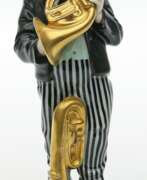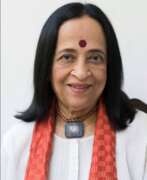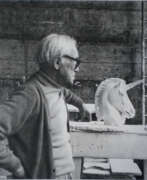Artists Monumentalism
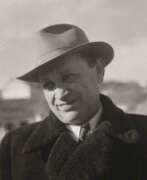

Antun Augustinčić was a distinguished Croatian sculptor born on May 4, 1900, and he passed away on May 10, 1979. His contributions to the art world have cemented him as one of the foremost Croatian sculptors of the 20th century, alongside Ivan Meštrović and Frano Kršinić. Augustinčić is widely celebrated for his remarkable sculptures, many of which are displayed in prominent locations across the globe.
Among his notable works is the Peace monument, which holds a place of honor in front of the United Nations building in New York City. This piece, in particular, serves as a testament to his skill in creating works that encapsulate profound messages and resonate on a global scale. His portfolio also includes the Miner statue, which is another significant piece that reflects his ability to capture the essence of various subjects through sculpture.
Augustinčić's legacy is preserved through the Antun Augustinčić Gallery, which was founded in 1970 in his hometown of Klanjec, Croatia. The gallery was established following his generous donation of his works, and it showcases his artistry and the development of his sculptural pieces over the years.
His educational journey included studies in Zagreb and Paris, and his art has been exhibited in prestigious salons, demonstrating his international acclaim and influence. Augustinčić's works not only reflect his technical prowess but also embody the cultural and historical context of his era, contributing to both Croatian and international art history.
For those intrigued by the legacy of Antun Augustinčić and his artistry, staying updated on new discoveries, exhibitions, and auction events related to his work is essential. Signing up for updates ensures that collectors and art enthusiasts are the first to know about opportunities to engage with Augustinčić's enduring legacy. This subscription is a gateway to exploring the fascinating world of art and antiques, focused exclusively on new product sales and auction events tied to Antun Augustinčić.
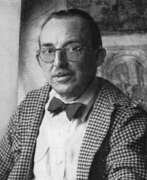

Dean Cornwell was an American illustrator and muralist. His oil paintings were frequently featured in popular magazines and books as literary illustrations, advertisements, and posters promoting the war effort. Throughout the first half of the 20th century he was a dominant presence in American illustration. At the peak of his popularity he was nicknamed the "Dean of Illustrators". He began his professional career as a cartoonist for the Louisville Herald. Soon thereafter he moved to Chicago, where he studied at the Art Institute and worked for the Chicago Tribune. Cornwell's paintings were in Cosmopolitan, Harper's Bazaar, Redbook, and Good Housekeeping magazines. He painted murals for the Los Angeles Public Library, the Lincoln Memorial Shrine in Redlands, California etc. Cornwell taught and lectured at the Art Students League in New York. He served as president of the Society of Illustrators from 1922 to 1926, and was elected to its Hall of Fame in 1959.
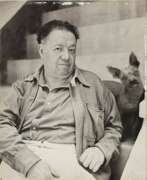

Diego María de la Concepción Juan Nepomuceno Estanislao de la Rivera y Barrientos Acosta y Rodríguez, more commonly known as Diego Rivera, was a prominent Mexican painter celebrated for his critical role in establishing the Mexican mural movement both nationally and internationally. Born on December 8, 1886, in Guanajuato, Mexico, to a well-to-do family, Rivera was a child prodigy in art, encouraged by his parents from a young age after they noticed his penchant for drawing. This early support included installing chalkboards and canvases on the walls of their home to foster his talent.
Rivera's art was not just limited to murals; he was also a key figure in Mexican Cubism and had a rich body of easel paintings. However, his murals, depicting scenes of Mexican society and reflecting his leftist political views, remain his most notable contributions. Some of his most famous works include "Man at the Crossroads," which stirred controversy due to its inclusion of Lenin, leading to its destruction at the Rockefeller Center in New York. Rivera's murals are scattered across Mexico and the United States, serving as historical documents that highlight his technical skill and deep social engagement.
His personal life was as colorful and tumultuous as his art, marked by multiple marriages, including to fellow artist Frida Kahlo. Their relationship was both passionate and stormy, significantly influencing their respective works. Rivera's legacy extends beyond his artwork; he was a mentor to several artists and left an indelible mark on the art world with his contributions to public art and his political activism. His works have been declared national monuments by the Mexican government, underscoring his pivotal role in the country's cultural heritage.
For collectors and experts in art and antiques, Rivera's works offer not only aesthetic beauty but also deep social and historical insights. If you're passionate about adding a piece of this rich cultural heritage to your collection or staying updated on auction events related to Diego Rivera's art, signing up for updates can provide you with timely information on new sales and exhibitions featuring his masterpieces.
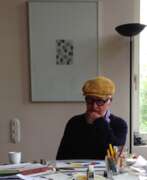

Ulrich Rückriem is a German sculptor known for his large-scale stone sculptures that are often displayed in public spaces. He studied at the Werkkunstschule Krefeld and the Kunstakademie Düsseldorf.
Rückriem's early work was influenced by the Minimalist movement, and he became known for creating abstract, geometric sculptures from raw stone blocks. He often works with granite, basalt, and other types of hard stone, using traditional carving techniques to shape and refine his forms.
In the 1970s, Rückriem began creating large-scale public installations, including his "Stone Alignments" series, which consists of rows of standing stones that evoke ancient megaliths and other prehistoric monuments. His work often engages with the natural environment, creating a dialogue between the man-made and the organic.
Rückriem has exhibited his work in museums and galleries around the world, including the Tate Gallery in London, the Solomon R. Guggenheim Museum in New York, and the Kunstmuseum Bonn in Germany. He has also received numerous awards and honors for his contributions to the field of sculpture, including the International Sculpture Prize in 1987 and the Praemium Imperiale in 2010.
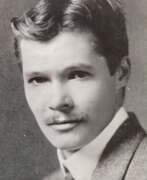

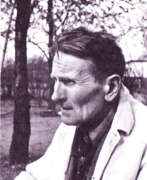

Heinrich Steinhagen, full name Heinrich August Friedrich Johannes Steinhagen, was a German painter, graphic artist and sculptor.
Heinrich began as a self-taught painter with paintings and miniatures in Impressionist and Expressionist styles. He also worked with elements of Cubism and Dadaism and eventually arrived at simplistic monumentality. Steinhagen was a co-founder of the Hamburg Secession and a member of the Hamburg Artists' Association. In 1937, Steinhagen, like many other artists, was persecuted during the Nazi campaign and spent several months in a concentration camp in 1944. This undermined his health and in 1948 he died of lung cancer.
Heinrich Steinhagen's creative legacy amounted to about a thousand works: oil paintings, pen and ink drawings, etchings, watercolors, woodcuts and sculptures in glazed clay, stone and wood.
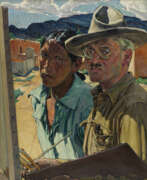

Walter Ufer is an American illustrator and muralist. He received his formal art education in Hamburg and Dresden, where he befriended the American artists Joseph Henry Sharpe and Ernest Blumenschein. In 1906, Ufer moved to Taos, New Mexico, where he became part of a group of painters known as the Taos Society of Artists.
Walter Ufer was drawn to the rugged landscape of the American West and the culture and daily life of the Pueblo Native Americans. Ufer's paintings are characterized by vivid colours and a free-spirited style of painting, conveying the energy and movement of his subjects. He often paints scenes of hunting, horseback riding and other outdoor activities.
Ufer's work was widely acclaimed during his lifetime and he received many awards for his paintings.
